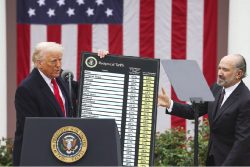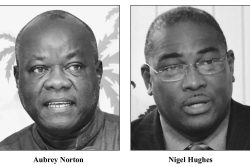Increasingly, reports in sections of the media, have been alluding to occurrences that imply (or at least so it seems) unwholesome relationships between the narcotics trade and law enforcement. Not infrequently those reports drop broad hints that where the fight against the drugs trade is concerned elements within some key state security organizations may well be part of the problem.
In the instance of the Guyana Defence Force (GDF), the media, back in July last year, reported on an occurrence where two Sergeants attached to the GDF were ‘busted’ with 154lbs of cannabis at Coverden on the East Bank Demerara during a “joint intelligence-led operation.” In the instance of the Prison Service there have been reports of ‘outsiders’ (presumably supported by insiders) smuggling drugs into local correctional facilities.
The reports that involve the Guyana Police Force (GPF) have been decidedly more expansive, pointing to what is, allegedly, a far more ‘intimate’ and ongoing relationship between elements within the Force and the illicit substances ‘sector.’ Some of the reports on this alleged aspect of the drugs trade assert that elements in the GPF have been performing functions that point to a somewhat more ‘structured’ ‘partnership’ between the illicit drugs trade and those elements. Of late, there have been reports of what, seemingly, are much more intimate ties between the illicit drugs sector and elements in the GPF, one of the more recent occurrences being the ‘busting’ of “two SWAT ranks” after suspected cannabis and drug paraphernalia were found in a rental vehicle they occupied”.
In circumstances where functionaries employed with one or another branch of the Disciplined Services are believed to be ‘tight’ with the drugs trade it is high time that some measure of official information on this issue (sufficient to at least enable greater public enlightenment) be forthcoming from law enforcement. Here, we contend that the option of enlightened public disclosure on such issues ought to supersede the altogether counterproductive option of having to countenance a surfeit of dissonant and by extension harmful reports (road news) into the public domain.
When, for example, reports surface in sections of the media of police cars being intercepted in circumstances where it appeared that the occupants may have been in the process of executing a drugs-related assignment then the public is entitled to a great deal more than a subsequent virtual wall of official silence that attends official reporting on the matter. That approach hardly helps the public to understand (as it should) those aspects of the drugs trade that are linked to aspects of public behaviour, including an enhanced understanding of the nature of the drugs trade and how it impacts on law enforcement.
Here, two things ought to be matters of concern to officialdom. First the country’s external image is likely to be taking something of ‘a beating’ at a time when the country’s petro credentials are attracting unprecedented levels of external investor interest; the second and equally important consideration here has to do with the attraction that an oil-rich country possessing fragile security bona fides, offers for ‘visitors’ whose only interest is in reaping the ‘spoils’ that derive from the weaknesses that persist in our overall security regimen. Truth be told, it has been the leaden-footedness of the authorities in taking workable initiatives to remove the weaknesses that persist in what, in some instances, are glaringly lopsided and unworkable solutions.
Here, one need hardly ‘spell out’ the likelihood of what frequently appears to be the country’s decidedly ‘wobbly’ public security profile impacting on serious investor interest appeal, on the one hand and on the other, the dangers of the country becoming seen as a ‘soft’ target – a free-for-all, if you will – for external crime-related interests,.
Here the point should be made that aside from the upbeat reports (to their home capitals) that derive from the diplomatic community, (including international organizations with resident representation in Georgetown) which are dispatched to the various country capitals and headquarters regarding the significance that attends Guyana’s petro portfolio, those missives are unlikely to fail to outline what they may regard as the ‘downside.’ This is where drugs trafficking, corrupt cops and perceptions on ineptitude on the parts of the state-controlled security agencies usually come in.
Whether or not these considerations, are, even now, being factored into the country’s investment profile proffered by the authors of this report is not a consideration which the authorities here can afford to simply sweep under the carpet.








